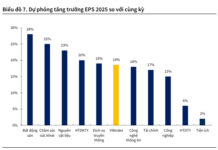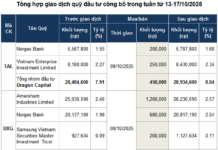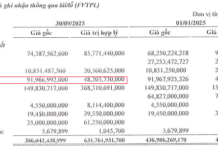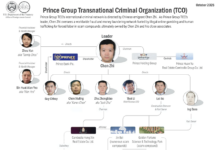“Using the company’s brand to deal with personal issues is both incorrect in theory and cold in sentiment,” asserted Ms. Dang Thanh Van – Chairwoman of the Board of Directors of Thanh’s Branding and Management JSC.
The apology from Mr. Nguyen Nhat Anh – Director of Nha Nam Media and Culture JSC – about the allegations of sexual harassment on Nha Nam’s Fanpage existed for more than 18 hours before being deleted and replaced with another official announcement from Nha Nam – more formal, including information on the temporary suspension of the Director’s position.
We would like to share the analysis by Ms. Dang Thanh Van – Chairwoman of the Board of Directors of Thanh’s Branding and Management JSC – on Nha Nam’s crisis.
What is happening at Nha Nam?
The story originated from a Nha Nam employee speaking out about being sexually harassed by their boss. The matter became more serious when some authors voiced their support for the alleged victim, and (possibly) many issues occurred to the extent that Mr. Dang Hoang Giang declared on his personal Facebook about stopping cooperation with Nha Nam Publishing House.
Nha Nam also continued to announce that they accepted the author’s request and defended Nha Nam’s views. However, in some comments replying to readers on the author’s post, a Nha Nam representative spoke quite strongly against the readers’ speculations (warning about legal issues).
This incident would not have “exploded into a double public communication crisis” if not for a disastrous handling from the Director of Nha Nam Media and Culture JSC himself, who is alleged to be the central figure in the case.

A personal apology was posted on the company’s Fanpage, which has now been deleted.
Leadership brand and double communication crisis at Nha Nam
In this incident, two issues are being handled incorrectly.
1. Leadership brand and brand ambassador role are not well utilized, causing damage to the company’s brand. In the situation where Nha Nam is originally a well-loved brand, the role of Brand Ambassador and Leadership Brand was not activated at all, creating no power/prestige/trust for neither the Leadership Brand nor Nha Nam Brand.
But when an incident occurred, this leader used his power to communicate personal issues, leading to the public turning their backs (who originally loved the brand and did not know about the leader as an individual).
Not to mention the way he apologized, but did not apologize at all and thoroughly resolve the incident in the post’s content, disabling comments did not satisfy the brand’s fans.
The time of posting (at 0:30 AM) is also a big question mark. This is the lowest point (in communication) causing the public to have even more reason to judge that he is “just making excuses,” criticizing and questioning.
2. Dealing with personal communication incidents incorrectly, leading to the explosion of a communication crisis for the company’s brand.

Illustrative image.
As the incident was developing, Nha Nam’s hesitation in showing their attitude and viewpoint made some prestigious authors and readers feel unsatisfied and expressed their opinions on their personal pages. However, this was still “within the circle” of the brand and was not a “communication crisis” until the post from the Director of the Publishing House occurred.
In this case, using the company’s brand to deal with personal issues is both incorrect in theory and cold in sentiment.
When the business leader is considered the brand ambassador
Regarding the role of Leadership Brand and Brand Ambassador, leaders of organizations/companies must always accept the fact that “their personal reputation is synonymous with the company’s reputation. When it goes up, it goes up together; when it goes down, it goes down together.”
Therefore, when taking on the role of a leader, even if the leader does not communicate it externally, they must still present themselves as a “brand ambassador” representing the company and responsible for supporting, spreading, fostering affection, trust, and creating a good reputation for the organization. Leaders setting an example is a duty, not a “power.” Preserving the prestige, honor, and personal reputation of the leader must be included in the RACI (RACI responsibility matrix stands for the first letters of 4 words: R– responsible; A– Accountable; C– Consulted; and I – Informed) and the organization’s Cultural Handbook.
With the current issue and incident, there is a double communication crisis (Leadership Brand – Company Brand) that needs to be handled by Nha Nam.
Nha Nam brand’s reputation and prestige will be severely affected by the incident, especially since the business is in culture and many readers are KOLs and Influencers with wide influence in society.
What should a company do when its leader is involved in rumors or lawsuits?

Illustrative image.
In the situation where the leader is involved in a lawsuit or is falsely accused, a wise move for the company’s brand is to inspire communication, making partners and customers (authors in this case) stand up to protect the brand and the reputation of that leader (based on the value that the leader has built in past experiences). As for the brand, it reflects on its core values and declares transparency and fairness, showing its cooperative stance and upholding justice.
On the other hand, with cases involving personal ethics and legal issues of the leader, it is no longer a matter of “apologizing and handling internally,” but it is highly likely that they will have to explain themselves to law enforcement agencies (if sued) or explain themselves internally to the company, shareholders, and board of directors. They may have to declare their resignation or be removed from office (depending on the truth and severity).
The fact that Nha Nam’s Board of Directors has spoken up (although only by posting on the official Fanpage) after more than 18 hours since Mr. Nguyen Nhat Anh posted his apology has shown the power of social media.
According to the posts of some authors who have announced that they are stopping cooperation with Nha Nam Company, they are not satisfied with the company’s hesitation and lack of clarity when the incident broke out.
Therefore, this move by Nha Nam’s Board of Directors cannot be confirmed as active cooperation and transparent information, but it can be a “forced action” when the incident has become a crisis, damaging the brand’s reputation.
Some also argue that Nha Nam’s Board of Directors only posts on social media (which can be edited, deleted, or revised at any time), so they are not satisfied. Personally, I affirm that posts on social media, on the official Fanpage, can be “tracked” and are a form of public communication accepted by the community. Of course, Nha Nam’s Board of Directors also needs to legitimize the information with a signed, stamped Press Release.
However, in terms of crisis communication handling, Nha Nam’s Board of Directors has shown a spirit of receptiveness, quick correction, and listening to the community. This is also a suitable course of action with clear results when the comments on the post have decreased in severity, and there are comments supporting and agreeing.





































